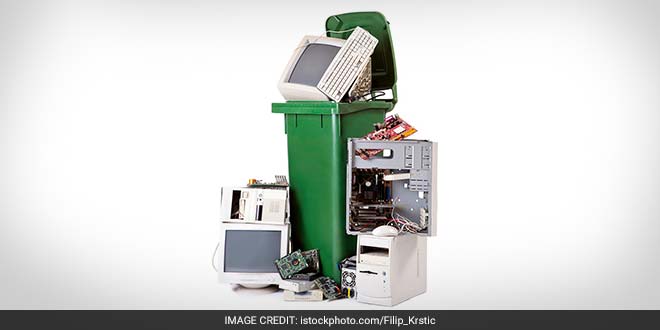New Delhi: Delhi-national capital region struggles with another waste management battle! According to the industry body Associated Chambers of Commerce and Industry of India (Assocham) report, Delhi-NCR is likely to generate about 1.50 lakh metric tonnes (MT) of e-waste per annum by 2020 from the current level of 85,000 metric tonnes. Yes, that’s an unimaginable and unmanageable number. This is despite the E-Waste Management Rules 2016 being in place. The factors attributed are low organised recycling, cross-border flow of waste equipment into the country, limited reach out and awareness regarding disposal, and lack of coordination between various authorities for non-involvement of municipalities in E-waste management.
Also Read: United Nations Warns Of Increase In E-waste And Urges Recycling Of Hazardous Waste
Releasing the report, D S Rawat, Secretary General Assocham said,
Delhi-NCR is turning into the world’s e-waste dumping yard with the capital alone getting 85 percent of waste generated in the developed world.
Mr. Rawat further added that each state in India should develop its own scrap yards in the respective cities so that the environmental hazards would be minimized in Delhi-NCR.
Breaking down the numbers, Assocham report said that as many as 12,500 mobile handsets, 8,500 TV sets and 5,500 personal computers are dismantled in the city every day for reuse of their component parts and materials as these products are getting more affordable and more and more people are using them.
Increasing usage also leads to more of them coming up for disposal, thus increasing the rate of obsolescence and replacement. As a result, e-waste is on continuous rise in the city and is not being managed effectively, thereby risking city’s health. Currently, the city has 13 units that can process just 47,000 tonnes of e-waste.
Also Read: E-Waste Generation May Increase By 1800 Per Cent, Says ASSOCHAM-KPMG Report
Last year, the government proposed to set up 37 e-waste collection centres across the city. The move came in the wake of rising concerns about e-waste being dumped without segregation and the unauthorised dismantling of e-waste, but till date efforts on this front have been feeble.
From Delhi to India, the report highlighted,
Less than 1.5 per cent of India’s total electronic waste gets recycled due to absence of proper infrastructure, legislation and framework. In 2017, the country produced approximately 2.5 million metric tonnes of e-waste.
India generates nearly 18 lakh metric tonnes of e-waste and ranks fifth in the list of countries which are the largest producers of e-waste. In three years, the country is in danger of producing e-waste which is 1800 per cent more than what the country presently generates.
Also Read: E-Waste: Tackling India’s Next Big Waste Problem
Highlighting the dangers in handling e-waste the report also said that the e-waste products have components that contain toxic substances like lead, cadmium, mercury, hexavalent chromium, plastic, PVC (polyvinyl chloride), BFRs (brominated flame retardants), barium, beryllium, and carcinogens like carbon black and heavy metals. And their deadly mix can cause severe health problems for those handling the waste.
Last year, in a joint study carried out by the Assocham and KPMG came OUT with a few suggestions in order to help authorities handling e-waste. But, as of today, these suggestions have not seen the day light.
Some of the points in the proposal included – recognition of E-Waste as a problem at par with other types of waste. It also said that the government should draw inspiration from the example of countries like South Korea, which manages to recycle nearly 21 per cent of its 0.8 million tonnes of e-waste. And the government should consider privatisation of e-waste management as they are already burdened with solid waste management.






























